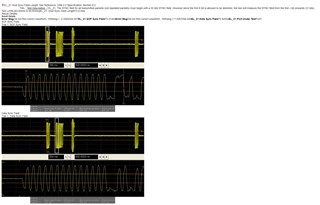
- #XBENCH IMPROVE USER INTERFACE TEST FULL#
- #XBENCH IMPROVE USER INTERFACE TEST DOWNLOAD#
- #XBENCH IMPROVE USER INTERFACE TEST MAC#
the Netgear Stora stuff also looks interesting, but it seems it also has its fair share of issues.

The Iomega Ix2-200 looked promising, but some devastating reviews amazon has put me off. what is Valet? haven't a clue, other than beautiful people can use it easily. after some googling, I found that what I was looking for was an NAS device.Īnyone been to Linksys' site lately? it's now streamlined and fantastically worthless. Would still like to use the Time Machine s/w, though. That, and there's no built-in RAID, so Time Capsule is off the list. it didn't take me long to find the accounts of the multitudes with failed Time Capsules, seemingly due to a bad thermal design. Naturally, i first investigated Apple's solution, Time Machine and Time Capsule.

And to get the gf's machine running regular backups, as well.
#XBENCH IMPROVE USER INTERFACE TEST MAC#
Now that i've moved into the 21st century with the purchase of a new mac laptop running Snow Leopard (previously was running Tiger, skipping Leopard entirely), AND designating my laptop as my new "main machine", i thought it high-time to modernize my backup procedures. Remember, drive speeds vary greatly with external volumes, and some limitations come from the drive type itself (flash, ssd, traditional spinning platter), and others from the connection interface (USB, USB 2, Thunderbolt, etc).Today I learned about NAS: network attached storage. Many external devices may have slow read and write speeds that would be intolerable for primary disk performance, but for an external volume that speed may be considered acceptable since it’s usage is more limited. When Xbench is finished you will see the results under “Disk Tests” for sequential read and write and random read and write tests for different size file blocks.
#XBENCH IMPROVE USER INTERFACE TEST FULL#
Let Xbench run it’s full disk read, write, and access benchmarking tests. Pull down the “Volume” menu and choose the external drive from the list, then choose “Start”. Uncheck every option except for “Disk Test”. Open the DMG and launch Xbench.app (copy to your /Applications/ folder if desired). #XBENCH IMPROVE USER INTERFACE TEST DOWNLOAD#
Download Xbench free from the developer. Connect the external drive to the Mac, be sure it is formatted for OS X use. With some minor settings adjustments, XBench can be turned exclusively into a simple disk speed performance testing suite, and it provides a simpler interface than Disk Speed Test. Testing Disk Read/Write Speeds with XbenchĪnother option is to use Xbench, and older free app that performs a general benchmark suite on OS X. If desired, you can adjust the size of the file being tested for read and write speeds by pulling down the “Stress” menu. The results from Disk Speed Test populate on the right side under the “How Fast” section, and show both the write and read speeds. Choose “Start” to begin running the speed test and let it run for a few minutes. Click the gear button in the middle and choose “Select Target Drive” (or, pull down the File menu and choose the same option) and select the external drive to test.  Get DiskSpeedTest from the Mac App Store (free) and launch the app. Connect the external drive (USB, Thunderbolt, Firewire, etc) to the Mac (for best results, format it to be Mac compatible first). Testing External Drive Read/Write Performance with Disk Speed Testĭisk Speed Test is the same simple app used to benchmark an SSD or standard hard drive, and with some minor effort can be This can be helpful for benchmarking the performance of external volumes for Time Machine backups, RAID setups, or even just to find out if an external USB flash key drive is fast enough to run a game or app from.įor those who aren’t aware, external drives are generally much slower than internal drives, so for most cases you should not expect the performance of an internal disk to replicate on an external drive.
Get DiskSpeedTest from the Mac App Store (free) and launch the app. Connect the external drive (USB, Thunderbolt, Firewire, etc) to the Mac (for best results, format it to be Mac compatible first). Testing External Drive Read/Write Performance with Disk Speed Testĭisk Speed Test is the same simple app used to benchmark an SSD or standard hard drive, and with some minor effort can be This can be helpful for benchmarking the performance of external volumes for Time Machine backups, RAID setups, or even just to find out if an external USB flash key drive is fast enough to run a game or app from.įor those who aren’t aware, external drives are generally much slower than internal drives, so for most cases you should not expect the performance of an internal disk to replicate on an external drive.







 0 kommentar(er)
0 kommentar(er)
